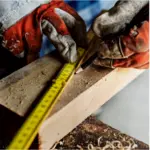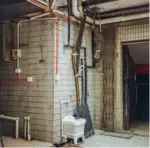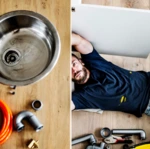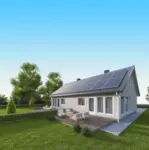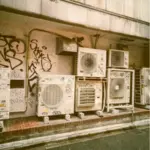Get Free ECO4 Grants Scotland Before March 2026
Private tenants, homeowners, and landlords across Scotland can claim free installations of solar panels, air source heat pumps, and comprehensive insulation measures. The scheme specifically targets rural properties with low energy rating.ECO4 scheme in Scotland provides 100% grants for free
- Free solar panels air source heat pumps homeowners
- Scotland Claim ECO4 grants reduce energy bills fuel poverty today
- Eligible private tenants landlords get insulation upgrades completely free
Check ECO Grant Eligibility And Reduce energy bills now
What is the ECO4 scheme in Scotland?
The ECO4 scheme represents a government-backed initiative where major UK utility companies like British Gas, EDF, and Scottish Power provide funding from their profits to help Scottish households escape fuel poverty.
Unlike previous versions of the ECO grant, this latest iteration runs until March 2026 and takes a whole house multi-measure approach rather than installing single measures like basic loft insulation or cavity wall insulation.
What makes this scheme particularly designed for Scotland is its focus on properties that are off gas grid and heated by oil, LPG, or electric heaters, which describes thousands of rural Scottish homes.
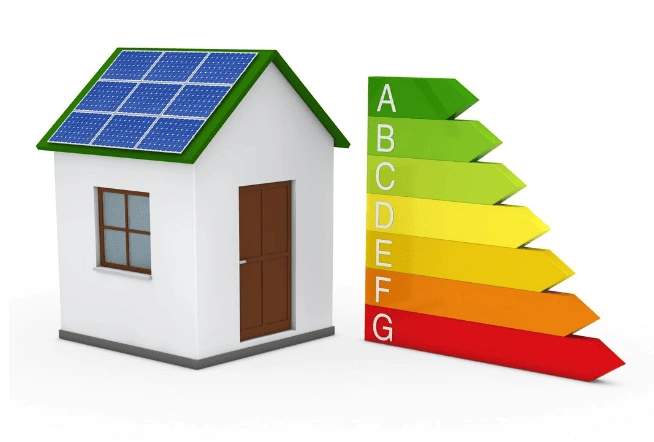
The ECO grants cover the cost of installing comprehensive energy-saving products including Solar Panels, Air-source heat pump systems, Solid wall insulation, and Boiler Upgrades. However, the government regulations require that every retrofit project must increase the property’s energy rating by a minimum of two EPC bands for the project to be considered successful.
This differs hugely from previous versions like ECO3, which reached completion in June 2022, because ECO4 aims to optimize energy performance of every property through deeper retrofit energy improvement measures.
The scheme provides 100% non-repayable funding to eligible homeowners, landlords, and private tenants who live in their own properties.
To qualify, someone living in the property must claim specific income-related benefits such as Universal Credit, Housing Benefit, or Working Tax Credit, and the home must have a low energy efficiency rating of E-G. The ECO4 focuses on vulnerable households with young children and low income families, particularly those in stone-built properties that don’t have cavity walls and require internal solid wall insulation to be fitted inside their external walls.
Claim Your 100% FREE Heat Pump & Solar Panels - Scottish Households Only
What grants are available?
Insulation grants
Cavity Wall Insulation
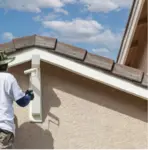
A quick and efficient way of reducing heat loss in cavity wall homes
Internal Wall Insulation
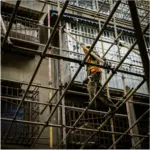
An effective way of reducing heat loss in solid wall properties
External Wall Insulation

Reduce heat loss in solid and cavity wall homes and get a modern look
Room in Roof Insulation

Make your room in the roof comfortable all your round and reduce energy costs
Flat Roof Insulation
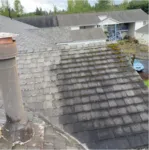
Reduce energy costs and refurbish your flat roof at the same time
Heating Grants
Gas Boiler Upgrades
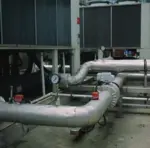
Upgrade your non-condensing boiler to an A-rated high efficiency condensing boiler
Oil & Solid Fuel Boiler Replacements
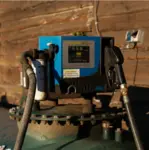
Find out how we can replace your existing oil or solid fuel boiler with a brand new air source heat pump and solar panels
First Time Central Heating
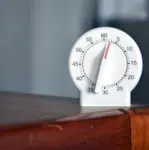
Install central heating for the first time in your home and you could reduce your bills
Solar PV and Air Source Heat Pumps
ECO4 Scheme Eligibility in Scotland - Who Qualifies?
The ECO4 scheme eligibility landscape has fundamentally shifted from previous iterations, where applicant circumstances and property characteristics now intertwine in complex ways.Unlike the ECO3 phase that previously operated with broader parameters, today’s criteria demands that occupant status aligns with specific benefits eligibility structures. Households claiming Income-based Jobseeker’s Allowance
- Child Benefit (conditions apply)
- Child Tax Credit
- Employment & Support Allowance
- Housing Benefit
- Income support
- Job Seekers Allowance
- Pension Credit Guarantee Credit
- Pension Credit Savings Credit
- Universal Credit
- Working Tax Credit
- Warm Homes Discount
The transition saw certain benefits scrapped, while others like Employment Support Allowance gained prominence. Disability support recipients including those receiving Armed Forces Independence
Payment, Attendance Allowance, Carer’s Allowance, Constant Attendance Allowance, Disability Living Allowance (DLA), Income-Based ESA, Industrial Injuries Disablement Benefit, Income Based JSA, Personal Independence Payment (PIP), Severe Disablement Allowance, War Disablement Pension, or War Pensioners Mobility Supplement automatically meet qualifying thresholds.
The focus changed dramatically when Child Benefit was removed as a standalone qualifier, shifting the main focus toward vulnerable families with lower incomes. Properties must display Energy Performance Certificate (EPC) ratings of E, F, or G – these homes represent the least efficient type in Scotland’s housing stock.
Traditional stone construction, particularly those built using older methods, normally fall into this category due to inefficient heating systems and substandard insulation. The region where you reside matters significantly, as thousands have benefited from prior schemes that concentrated on different ways to improve efficiency.
Current requirements ensure your house fits specific categories – internal and external wall types, central heating systems, and overall performance bands all factor into whether programmes will install required measures. The Renewable Heat Incentive (RHI) connection requires Smart controls and room thermostats to be included, which can increase overall project scope beyond basic heating products and boilers.
Escape Fuel Poverty Today - Get FREE Insulation & Heating Upgrades Across Scotland
ECO4 Solar Panels
When families discover they can reduce their electricity bills by around 60%, the reality of free solar panels through ECO4 becomes transformative. These PV systems work effectively even during Scotland’s cloudy weather, generating their own green electricity while making households less vulnerable to fluctuating energy costs. The grant covers a complete energy makeover – panels installed on your roof alongside air source heat pumps create substantial savings with immediate impact.
What makes this available opportunity remarkable is how eligible homeowners can achieve up to 70% reduction in energy dependency. The sun’s rays convert into usable power for appliances and lighting, functioning efficiently in Scotland’s suitable climate. Installing these systems means you self-generate a substantial percentage of the power you use, and the panel technology ensures you make real progress toward energy independence while the PV installation provides lasting value.
ECO4 grants for an air source Heat Pump
Government rural updated Company Obligation schemes have been rejuvenated and focused on providing full improvement projects for parts of Scotland where living spaces are heated by fossil fuel boilers. These designed upgrades help determine which types of properties qualify when someone meets tax credits terms and they live in brick-built older homes with walls that aren’t properly insulated.
The good news is that along with being part of the use of the latest technology, it’s a sustainable way to have your boiler replaced. Fossil fuel systems are very expensive to burn as a fuel source, expensive to run, and release harmful emissions that have a negative impact on the environment. Replacement systems run on fresh outside air, collecting ambient heat that gets compressed and updated through the efficient use of ground technology to create hot water at your taps inside your home. Heat is collected from the air and transferred to water systems throughout your property
How ECO Grants Work / How Do I Apply for an ECO4 Grant
Getting started with ECO4 involves understanding that this Scottish system operates through a straightforward three-step process. First, use the online postcode checker to confirm your area qualifies, then contact certified assessors who will arrange a comprehensive survey of your property.
The accredited professionals take care of all paperwork, meaning household members don’t need to handle complex construction details.
Step 01 requires checking eligibility through the form
Step 02 involves the installation survey
Step 03 covers the actual installation of measures.
The funders – major energy companies – are committed to reducing emissions released into the environment as part of their national drive toward lower carbon levels to hit net zero by 2050. Heat pump systems typically achieve an efficiency rating of C or higher, with improved rating meaning less cost to heat your home. Unlike most traditional systems, heat pumps do not burn fuel but instead collect ambient warmth, compress it, then transfer this heat to water at a comfortable temperature.
The water is heated to a couple of degrees lower than condensing boilers, so homes need adequately insulated walls to benefit from this type of system. The scheme will cover the complete cost of installation, making energy efficiency accessible to eligible Scottish households.
From Fuel Poor to Energy Efficient in 3 Simple Steps - Start Your Scottish ECO Grant Journey
Solid Wall Insulation (Scottish Energy Grants)
When your home was built around 1930 or earlier, you’re probably dealing with solid walls that lack the modern cavity design. This means your property was likely constructed using traditional stone or brick without any gap to fill with standard insulation materials. Internal wall insulation offers the most effective solution for this type of building challenge.
The insulation material gets fitted directly to the interior surface of your existing exterior walls, then finished with fresh plaster and a final skim coat. During installation, interior fittings including light switches and sockets must be temporarily removed and then carefully refitted, leaving your walls completely paint-ready.
Beyond thermal benefits, this upgrade will improve the aesthetic appearance of your rooms while providing a measure that’s fully covered under current Scottish energy grant schemes, helping transform your older property into a modern, energy-efficient home.
Cavity wall insulation (Scottish Energy Grants)
What many homeowners don’t realize is that their house built after 1920 probably has a gap between the outer walls – and this cavity represents the single biggest opportunity to stop heat from escaping.
Through years of working with UK landlords and tenants, I’ve witnessed firsthand how around 35% of average heat gets lost through these unfilled spaces. The Government Insulation Scheme has helped hundreds of thousands transform their properties by addressing this problem systematically.
The wall insulation process involves injecting man-made fibre or similar materials that are finely chopped to fit precisely within the cavity. This creates a moisture-proof barrier that cannot allow dampness to pass from exterior to interior via the traditional thermal bridge.
Installing this insulation essentially puts a protective coat around your external walls, keeping the warmth inside and meaning you’ll save significantly over time. The level of comfort improvement is immediate – you’ll need less gas and other fuel to maintain temperature, which reduces harmful emissions released into the environment.
During summer months, the same insulation keeps your house cooler, creating year-round benefits. Most properties have walls that are usually unfilled and need at least 50mm wide masonry in good condition – if your home is more than ten years old, there’s excellent potential for improvement.
The installation involves carefully drilling small holes in your external wall and using a borescope to look inside the cavity before the surveyor proceeds with filling.
How much can you save?
| Fuel bill savings (£/year) | £480 |
| Carbon dioxide savings (kgCO2/year) | 1100 |
| Fuel bill savings (£/year) | £285 |
| Carbon dioxide savings (kgCO2/year) | 670 |
| Fuel bill savings (£/year) | £180 |
| Carbon dioxide savings (kgCO2/year) | 425 |
| Fuel bill savings (£/year) | £195 |
| Carbon dioxide savings (kgCO2/year) | 450 |
| Fuel bill savings (£/year) | £145 |
| Carbon dioxide savings (kgCO2/year) | 335 |
Loft Insulation Grants (Scottish Energy Grants)
Most homeowners assume their loft is effectively insulated, but I’ve discovered through surveyor assessments that two-thirds of homes in the UK don’t meet the recommended level of 270mm (that’s 11 inches) of loft insulation. When heat rises and escapes quickly through your loft or attic, you’re probably losing around 25% of your heating energy, which costs a fortune in high gas bills.
The Government Company Obligation Funding makes loft insulation essential for owners, landlords, and tenants who meet the criteria. Loft insulation makes it increasingly difficult for heat to pass through by trapping escaping warmth and effectively keeping your home sealed.
When fitted across the joists in your loft, this gives you a protective sealed area that stays warm longer, meaning it costs less to fire up your heating and requires less time to maintain comfort. In most cases, the installation process takes less than two hours to complete, depending on the amount of loft space needed to cover.
Loft insulation is guaranteed for 40 years and saves money on bills while reducing carbon emissions. This insulation makes homes warmer in winter and cools them in summer, giving you the best of both worlds while increasing energy performance and making your property cheaper to run. Insulating your loft is the most simple and effective way to stop energy waste and cut the amount you spend annually.
Loft insulation stays effective for at least 40 years and can save around £175 per year in heating costs – these figures are estimated based on insulating a gas-heated semi-detached house with three bedrooms, though alternative fuel type users or those who live in larger detached house properties will see annual savings increase.
This effective solution ranks among the most simple and effective ways to save money through government-approved initiatives. A surveyor will come and give you a quick check to make sure you qualify, then you fill out an application form and within a short time later, installation begins.
If you already have Loft Insulation already in your loft, it’s best to check and see if it meets recommended levels for proper heat loss prevention – that’s 270mm or 11 inches in your attic.
If you have less than this amount, your loft isn’t insulated correctly and you can get loft improvements through grants. Getting loft insulation is a straightforward process where you arrange an appointment with an authorised Energy Surveyor by entering your details in the Form opposite.
The surveyor will contact you to arrange a loft survey and check to see if you meet recommended level requirements. Once the surveyor completes their assessment, they’ll fill out the necessary form and arrange an installation date to get your loft fitted.
Don't Miss Out - Get FREE Solar, Heat Pumps & Wall Insulation While ECO4 Funding Last
Why Apply for ECO?
The ECO initiative has assisted thousands of families who were previously deemed to live in fuel poverty, offering a transformative pathway to improve their living conditions through upgrading heating systems at no charge. Beyond immediate Energy Savings, this program delivers three compelling advantages that create lasting impact.
Improving your home’s energy rating means experiencing real-time financial relief from domestic energy costs while enhancing Home Comfort levels. You can keep your property significantly warmer and improve internal comfort conditions without worrying about escalating heating costs.
The Sustainable Heating solutions provide a cheaper, more environmentally-friendly way to manage your energy needs. Generate your own heating efficiency, becoming less reliant on fluctuating grid prices when you install these proven energy-saving measures.
Heat Loss Information (Scottish Energy Grants)
Your house is losing precious heat through uninsulated walls, and the numbers are staggering – around 25% of your warmth simply escapes through these outer surfaces, while another 35% is lost through various inadequate insulation points. This means a huge percentage of your fuel costs are being wasted unnecessarily, with high bills that could easily be reduced.
Insulating your home properly will save you £100’s each year while making it easier to keep warm during harsh Scottish winters. Beyond personal savings, you’re also helping the environment by reducing carbon emissions – a win-win situation that transforms your property from an energy drain into an efficient, comfortable living space.
Who Pays for Insulation Grants?
The financial backbone behind Scotland’s insulation grants comes from a set system aside by major energy suppliers to help combat rising energy costs. Companies like E.ON, SSE, and npower aren’t simply being generous – they’re actually instructed by government regulations and are obligated under legal frameworks to help reduce carbon emissions.
This obligation specifically targets efforts to help poorer sections of society cope with rising energy expenses. The Insulation funding mechanism is designed to meet these dual objectives: environmental responsibility and social support.
What many homeowners don’t realize is that these energy giants essentially fund the entire program through levies built into everyone’s energy bills, creating a collective approach where the industry supports those most in need of thermal efficiency improvements.
Book Your FREE Home Survey - Unlock Thousands in Energy Improvements Across Scotland
Extracting Old or Failed Cavity Wall Insulation
When cavity wall insulation starts showing signs of failure, many homeowners across the UK face a challenging situation that requires immediate attention. Most properties built from the 1930s onwards utilized this method of protecting homes from moisture penetrating the external walls, but what happens when the moisture begins to penetrate through the exterior brick and cross into the internal spaces?
The reality is that CWI installations from the last 30–40 years used different products to fill the cavities, and these have evolved significantly to suit modern industry and consumer needs.
Building technology from the 1960s and 1970s relied on materials that were used to prevent heat loss, but many properties that were insulated with expanding foam, mineral wool, or fibre now find their guarantee has expired.
The solution involves a process to normally extract the old insulation before installers inject new EPS (expanded polystyrene) beads – a type of product that proves more beneficial than most modern alternatives and remains highly effective for decades.
Parts of Scotland we cover (Scottish Energy Grants)
Although we’re based near Edinburgh, our experienced surveyors cover most areas where Scottish families live. The southern regions receive surveys within a 1 to 2 weeks timeframe on any given day, while two other regions follow our standard approach. We aim to provide comprehensive surveys within this time scale of approximately 3 weeks, ensuring every property assessment receives the same thorough attention regardless of location.
From the Highlands to the Borders, our survey and installation network reaches communities where energy efficiency improvements are needed most.
Apply for an ECO Grant in Scotland
Getting started with Scotland’s ECO Scheme requires understanding that this initiative specifically targets households experiencing fuel poverty. Rather than a complex application maze, the process starts by reducing your financial burden through non-repayable funding streams.
What many don’t realize is that this grant system operates on a qualification basis where your circumstances, not your property value, determine eligibility.
The beauty of ECO lies in its direct approach – once you demonstrate you’re struggling to keep your home warm during winter months, the funding provides comprehensive support. Unlike traditional loans that create long-term debt, these non-repayable grants literally transform your living situation without future financial obligations.
The application pathway connects you with approved Energy Company Obligation programs that cover installation costs completely, making energy efficiency improvements accessible to those who need them most.
Cut Energy Bills by 60% - Check If Your Scottish Property Qualifies for FREE Upgrades
Frequently Asked Questions (FAQs)
Can I still get free cavity wall insulation in Scotland?
Yes, cavity wall insulation remains accessible across Scotland through multiple funding streams. The Energy Company Obligation (ECO) scheme continues supporting households experiencing fuel poverty, while the Green Deal framework targets carbon dioxide emissions reduction.
Both loft and cavity insulation qualify under these initiatives, though restrictions apply to smaller properties unless occupants receive qualifying benefits or tax credits. Many homes still lack adequate insulation, making this cost-effective help particularly valuable as energy prices continue rising.
How much insulation should I have in my loft?
When I inspect properties across Scotland, I consistently find that the recommended thickness for loft insulation reaches 270mm – that’s approximately 11 inches of blanket-style glass wool or mineral wool. A large percentage of properties in Scotland currently do not meet this recommended depth, making it worthwhile checking your loft or attic space.
Because building regulations have changed a number of times over the last few years, your home insulation may have been fitted during a period when less was required by standards.
What if I am a landlord with several properties in Scotland?
Scottish landlords with multiple properties face no restriction on the number of homes they can upgrade through energy grant schemes. While the property’s eligibility depends on the tenant’s circumstances rather than the landlord’s financial situation, owners of several properties can claim insulation improvements for all qualifying homes.
However, each tenant must receive qualifying benefits or tax credits for their home to access free insulation measures, which includes loft and cavity wall upgrades.
Who installs my insulation if I qualify?
The government vets all installers working under Scottish Energy grants to ensure quality standards. These certified professionals carry out an initial inspection and comprehensive survey of your property to find what upgrades you qualify for before any work begins. Once you pass the assessment, government-approved insulation installer teams in your local area will handle the installation process.
The company that installs your loft or cavity wall insulation will depend on which part of Scotland you live in, as different approved contractors serve different regions.
ECO funds are available to many Scottish homeowners and private tenants who are classified as living in fuel poverty?
ECO funds are accessible to numerous Scottish homeowners and private tenants experiencing fuel poverty classification. Through comprehensive financial help, eligible households can secure complete energy upgrade solutions without upfront costs. The scheme specifically targets low income families who struggle with heating expenses, ensuring basic comfort becomes achievable.
Properties ranging from detached homes to flats can benefit from these government-backed initiatives that cover installation expenses entirely.
What measures does the ECO grant scheme cover?
Based on my experience working with Scottish energy efficiency programs, full coverage under the ECO scheme extends beyond basic improvements. The scheme includes comprehensive measures like new heating systems, solar panels, and complete insulation packages Installing comprehensive wall and loft insulation alongside modern heating upgrades creates a variety of interconnected benefits that work together rather than as separate solutions.
Many installations I’ve observed demonstrate how this integrated approach delivers lasting improvements that transform properties from energy-wasteful to highly efficient spaces. The cost barrier traditionally preventing homeowners from accessing these essential measures has been completely removed through this comprehensive funding approach.
Can I get solar panels through the ECO 4 scheme?
Solar panels aren’t typically covered through the ECO 4 scheme in Scotland, as this program focuses primarily on heating systems and insulation upgrades. The government funding prioritizes measures that directly address heat loss and improve boiler efficiency rather than renewable energy generation.
However, experienced installers often encourage property owners to explore other funding streams available in Scotland, including Home Energy Scotland loan programs that can support solar installations. If you’re looking to upgrade your home’s energy efficiency, the ECO scheme will focus on wall and loft insulation improvements that generate immediate reduction in bills.
Can I get a first time central heating grant through ECO?
Yes, households cannot own any part of a heating system to qualify for FTCH funding. This environmentally friendly alternative to existing electric systems must be completely off the gas grid without gas connection. Properties with electric storage heaters are amongst the least efficient and represent ideal candidates.
Many families discover that heat pump installations seen through this scheme provide substantial long-term benefits for homes previously reliant on costly electric heating solutions.
Is the ECO Scheme really free?
The ECO scheme operates as a full cost coverage program where never are households asked to pay money back after installation. Unlike other Warmers Homes initiatives that only provide partial funding and normally require customer contribution, this scheme covers the complete variety of energy efficiency improvements.
The program will live until March 2026, so families should Enquire now before it runs out of available funding.
How long does the ECO Grant Scheme run for?
The program will live until March 2026, so families should Enquire now before it runs out of available funding.
Applying for your free insulation and heating grant is as easy as 1, 2, 3…
1. Apply
Finish the online application form and we will reach out to assess your eligibility for complimentary insulation, heating improvements or solar panels via either ECO4 or ECO4 Flex programs
2. Survey
After confirming that you meet the criteria, we will coordinate with one of our Retrofit Assessors to complete a complimentary, commitment-free survey which will indicate your potential energy conservation
3. Install
We’ll arrange for the installation of your no-cost home upgrades through one of our thoroughly trained and accredited specialists who will dispose of any debris and restore order after any installation-related disruption
